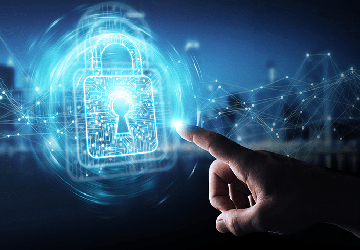Building Resilient Networks: Cybersecurity and Reliability
Connectivity serves as the digital artery of our hyperconnected society, facilitating data transfer, communication, and the operation of numerous services and devices. Everyone relies on connectivity to stay connected and receive important information, whether they are individuals, businesses, or governments. However, as relationships become more important and complex, ensuring their security and reliability becomes increasingly essential.
This article looks at designing robust connections to withstand cyberattacks and keep operations secure against all odds. The importance of this issue cannot be overstated, given that a network failure or security breach can have far-reaching consequences ranging from financial losses to the leakage of sensitive data.
Strategies and practices for building strong connections
Let's explore strategies and best practices for making solid connections, emphasizing technology and reliability.

1. Thorough risk assessment
A thorough risk analysis is the first step in building a solid network. This investigation should reveal the network's critical assets, vulnerabilities, and potential threats. Consider internal and external threats, including insider threats, phishing, and malware.
You can develop effective strategies to reduce the risk your network faces by identifying its specific threats. Implementing intrusion detection systems, access controls, and data encryption technologies may fall into this category.
2. Redundancy and failover mechanisms
A key component of cyber resilience is redundancy. If part of the network fails, there is always a backup route or system to keep operations running, thanks to redundant components and failover mechanisms. Redundancy can be implemented at multiple levels, including hardware, data center, and Internet Service Provider (ISP).
Consider, for example, deploying many ISPs with automatic failover capabilities. Network traffic is automatically diverted to a backup provider if an ISP fails, reducing downtime. Load balancers can also distribute data traffic to backup servers, ensuring continuous operations even in a server failure.
3. Network segmentation
Segmenting a network is dividing it into more isolated, smaller parts. Access control and security regulations may vary between parties. This strategy limits the scope for cyber threats to spread laterally within the network.
Segmentation is critical for large organizations because different departments or teams can access network resources differently. You can isolate potential vulnerabilities and prevent them from spreading throughout your infrastructure by segmenting your network.
4. Strong access control and authentication
Unauthorized access severely compromises network security. To confirm a user's identity, use robust authentication technology like multi-factor authentication (MFA). Additionally, strict access controls ensure that users only have access to the resources they need to perform their tasks.
RBAC, or role-based access control, is a convenient way to control access permissions. Access rights should be reviewed and updated regularly to reflect changing roles and responsibilities within the organization.
5. Continuous threat monitoring and detection
Proactively detect and mitigate threats with solid connectivity. Use a system that continuously monitors your network to detect suspicious activity, anomalies, or potential security breaches.
These solutions can send notifications so IT teams can quickly respond to new threats. To analyze network traffic patterns and detect anomalies that may indicate security issues, threat detection systems increasingly use machine learning and artificial intelligence (AI).

6. Continuing Education and Awareness
The weakest aspect of cybersecurity is often human behavior. Employees can unintentionally fall for phishing scams or ignore security measures. Regular technical training and awareness initiatives can significantly reduce the likelihood of human error.
Educate your employees about current risks, social engineering tactics, and how to spot suspicious emails and messages. Additionally, test employees' ability to respond to phishing attempts by having them participate in a simulated phishing exercise.
7. Disaster recovery and incident response
Despite all precautions, security incidents can still occur. Therefore, a clear incident response plan is crucial. The strategy should include containment, investigation, remediation, and recovery as procedures to be taken when a security incident is discovered.
In addition to incident response, a solid disaster recovery plan ensures the network is back up and running immediately after an adverse event. Regularly test your incident response and disaster recovery plans to ensure they are effective.
8. Secure communications
A key element of cybersecurity is encryption. All sensitive information sent over the network must be encrypted. Secure remote connections and protocols like SSL/TLS using a virtual private connection (VPN) for secure web interactions.
Encryption should be used from start to finish to protect data during transmission over the network. This ensures that even during a breach, intercepted data cannot be read by unauthorized parties.
9. Supplier Risk Assessment
Many organizations rely on third parties and service providers to provide various network infrastructure components. It's essential to evaluate the security practices of these providers and ensure they adhere to your organization's technical standards.
Add technical terms that indicate the seller is responsible for the security measures in the supplier contract. Periodically review and verify provider compliance with these protocols.
10. Regular updates and patch management
Threats to technology are constantly changing, and criminals often exploit software flaws. Frequently update and patch all applications, operating systems, and network hardware to address known vulnerabilities.
Automate patch management wherever possible to ensure emergency updates are installed immediately. To stay informed about new vulnerabilities, monitor vendor security alerts.
Diploma
In an increasingly digital and connected world, the value of building solid connections cannot be overstated. Technology risks constantly change, and network failures can impact businesses, governments, and people. Therefore, companies must prioritize building and maintaining solid and high-performing connections. Read this article to learn about the latest trends and developments.
Related Posts
- How to Use VPN to Access Blocked Websites?
- Top 10 IT Blogs for Staying Informed on Tech Trends
- 5 Amazing Apps to Organize Your Digital Life and Boost Efficiency
- How to Develop Cross-Platform Apps: Tools and Techniques
- How 5G is Transforming the Way We Connect
- How to Conduct Ethical Hacking: Penetration Testing Essentials